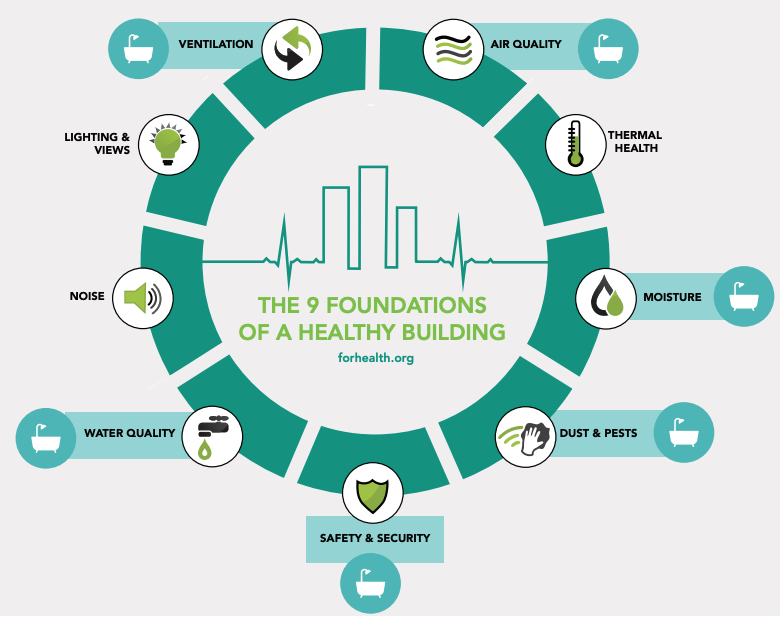Hand-washing is the cornerstone of public health. But don’t let that be the end of your efforts in making your bathroom healthier.
We can’t talk about being in the bathroom without talking about the number one public health recommendation – wash your hands. But our focus in Homes for Health is the physical environment in your home, so pay attention to these other expert tips that go beyond healthy behaviors.
Some of our recommendations for the bathroom, as you might have guessed, concern water. Like the basement, bathrooms are a place where humid conditions can lead to mold growth. And pooling of water can lead to slippery conditions. Our other recommendations address the chemicals in the cleaning products and personal care products we use. Some of these chemicals are toxic and there are safer product alternatives available. Remember, whatever you apply to surfaces in your home or your skin may end up getting inside your body.
Showers and baths distribute small water droplets around the bathroom. If not exhausted to the attic or outdoors, this moisture can build up and remain on surfaces long after the shower, creating perfect conditions for mold growth and water damage to materials and flooring that are not properly sealed. To prevent mold, run your bathroom ventilation fan while using the shower and right after.
Plug and play air fresheners deliver a constant stream of VOCs (volatile organic chemicals) into the air. If you’re worried about odors, consider using a small spray bottle-type air freshener and limit use to times when it’s really needed. Or even better, use the exhaust fan instead!
Many surface cleaners can introduce toxic volatile organic chemicals, or VOCs, into the air in your home. Look for effective green cleaners labeled as certified safer by a third-party organization like EPA Safer Choice, Green Seal, or ECOLOGO. Only use harsher disinfectants when and where you really need it, and avoid aerosol sprays. Your bathroom may also be loaded with personal care products – the average adult uses nine a day, with 126 unique ingredients. Fewer ingredients listed is always better – especially ones you can pronounce! Avoid phthalates (sometimes listed as ‘fragrance’) and parabens in ingredient lists. And take claims of ‘green,’ ‘natural,’ or ‘non-toxic’ with a grain of salt; these claims aren’t regulated.
Many products like soaps contain antimicrobials and are marketed with a health claim about killing microorganisms. Antimicrobial chemicals, such as triclosan and triclocarban, mimic your body’s hormones and can be harmful to health. They may also contribute to antimicrobial drug resistance. The simple truth is that soap and water do just fine. In fact, Kaiser Permanente, one of the leading U.S. healthcare organizations, has banned antimicrobials in soaps and cleaning products. We think this means you can too!
Falls in the bathroom remain a leading cause of injury, in particular for the old and young. Install non-slip mats in your shower and in the area where you step out of the tub or shower. Be sure your shower curtain prevents water from escaping and creating pools of water on the floor. Last, consider installing handrails in the shower and tub.
